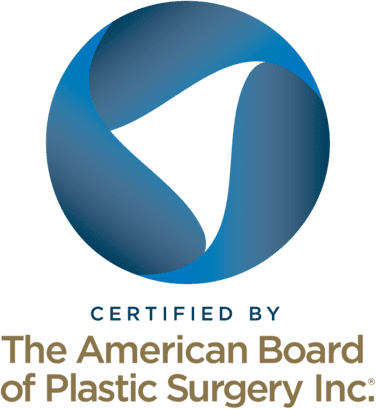A Comprehensive Guide to MTF Bottom Surgery
Medically reviewed by Jennifer Richman on April 30, 2024.
What is MTF Bottom Surgery?
Male-to-female (MTF) bottom surgery is a term that refers to a series of gender-affirming genital reconstruction procedures that remove natal genital tissue, such as the testicles and penis, and those that construct organs such as a vulva and/or vagina.
“MTF” is widely considered an outdated term because surgeries like vaginoplasty do not make someone turn from male to female. Rather, bottom surgery is meant to allow patients to feel in greater alignment with their body. After all, MTF bottom surgery is not prescriptive: there is no one correct way to transition or be a woman. Some trans women and trans feminine non-binary people are satisfied with just undergoing an orchiectomy, others pursue a vulvoplasty and others do not need to undergo any kind of bottom surgery. Still, we use the term “MTF” in this article out of the recognition that many patients use it to search for information about these surgeries.
The primary goals of what is called feminizing or “MTF” bottom surgery can be any of the following:
- Construct a functional vulva with labia, a clitoris and clitoral hood with or without a vaginal canal
- Maintain heightened sensitivity and capacity for orgasm in genital tissue
- Alleviate gender dysphoria and improve overall quality of life
Feminizing or “MTF” bottom surgery is a highly personalized process that requires careful planning, preparation, and ongoing support from a team of experienced medical professionals. Below you can read more about surgical techniques, candidacy requirements, preparing for surgery, recovery and more. If yo
Begin Your Journey: Request a Bottom Surgery Consultation
The first step in any gender-affirming surgical journey is soliciting a consultation with a surgeon. For your own safety, it is important that you choose a provider who is board-certified, has hospital privileges and has experience working with transgender and non-binary patients. Looking for bottom surgeons (i.e., pastic surgeons and urologists) in the World Professional Association for Transgender Health’s (WPATH) provider directory is one way to start.
At the GCC, Dr. Ellie Zara Ley (she/her/they) is a world-renowned bottom surgeon, a former patient herself and the only board-certified trans woman of color that offers a full spectrum of gender-affirming surgeries. Many patients come to her to begin their bottom surgery journey and, just as common, she is sought out for vaginoplasty and vulvoplasty revisions for her expertise. You can request a free, in-person consultation with Dr. Ley here to answer any questions you have about bottom surgery and/or create a unique, surgical plan for you.
Candidates for MTF Bottom Surgery
The threshold for qualifying for bottom surgery tends to be higher than other types of gender-affirming procedures. For example, surgeons are more likely to require that a patient present a support letter to undergo bottom surgery, regardless of whether or not they wish to pay with insurance. The following is a general overview of the requirements:
- Age 18 or older
- A letter from a support letter from a licensed mental health professional that includes the following:
- A gender dysphoria diagnosis
- Any other existing psychiatric diagnoses and whether or not they impact the patient’s readiness for surgery
- A statement that informed consent has been obtained from the patient (e.g., an understanding of the surgery’s long term-effects on their fertility)
- Realistic expectations about the surgery and its outcomes
- For more information on requirements, click here.
- Continuous hormone therapy for a minimum of 12 months (while not required by the GCC, many insurance companies include this as a part of their clinical guidelines)
- Vaginoplasty and some vulvoplasty patients will need to undergo hair removal in the months leading up to surgery
- Nonsmokers or individuals who quit tobacco and nicotine consumption at least 6 weeks prior to surgery
- Good overall physical health
- Vaginoplasty patients must have a BMI of 34 or less, while vulvoplasty patients must have a BMI no greater than 38
- Reliable support system including friends or family, mental health professionals as needed, and a safe home environment
- Commitment to adhering to post-operative care (e.g., dilation protocols)
It’s important to note that these criteria may vary depending on your surgeon’s recommendations for your individualized surgical plan. If you have questions about bottom surgery or are ready to make a plan for your procedure(s), you can request a free, in-person consultation with Dr. Ley (she/her/they) today.
Psychological Readiness
Undergoing feminizing or “MTF” bottom surgery is a significant life event that can bring up a lot of strong emotions for patients. Like any major surgery, patients not only have to prepare physically, but also psychologically. Outside of or in addition to the path to get a letter of support for bottom surgery, you may want to take the following points into account:
- Prepare for the difficulty of recovery: If you undergo a procedure that requires you to stay multiple nights in the hospital, leaves you bed-bound for several days or weeks and/or involves the use of a catheter, know that you will experience pain, swelling, bruising and discomfort as you require. Besides the physical toll, the early stages of healing can be very mentally and emotionally taxing. It is normal to experience temporary feelings of post-operative depression and even regret during this time. We encourage patients to practice self-compassion and patience while they heal.
- Seek counseling or therapy: If you are seeing a mental health professional, if it is within your financial possibilities, we highly encourage you to schedule post-operative check-ups before you go in for surgery. Recovery can be an emotional rollercoaster, and having time in your schedule ready to receive support can really help you make it through.
- Build a support system: Before you go under anesthesia, we recommend that our patients plan on who will come visit them in the hospital, help them out with household chores and other care activities during recovery. Besides the physical assistance, having loved ones be present to provide emotional support can make a big impact on your wellbeing.
- Possible complications: While rare, many patients come into surgery anxious about experiencing complications post-op. Familiarizing yourself with recovery instructions prior to surgery helps some patients feel more confident about how to take care of themselves afterwards to minimize the chance of a complication occurring. Likewise, reviewing the list of urgent issues in the link above can help you distinguish between an urgent complication that requires attention in an Emergency Room, a less urgent complication or a normal part of healing.
Types of MTF Bottom Surgery
Feminizing or “MTF” bottom surgeries can be divided into two categories: expricative procedures that remove existing organs and reconstructive procedures that reconfigure the genital tissue.
Orchiectomy and Scrotoplasty
What is this procedure? An orchiectomy is the removal of the testicles whereas a scrotoplasty is the removal of the scrotal sack or skin. These procedures can be performed simultaneously or as an orchiectomy that preserves the scrotal skin.
Why do patients undergo this procedure?
- To treat gender dysphoria: For some trans feminine people having testicles and/or a scrotum is a source of dysphoria. Removing them can be a source of relief. Not to mention, many patients express that getting an orchiectomy helps them reach greater clarity about whether a vaginoplasty/vulvoplasty would be right for them. That said, patients that want to keep that option open should not undergo a scrotoplasty.
- Preparing for a vaginoplasty/vulvoplasty: Many patients undergo an orchiectomy as a first step prior to undergoing a vaginoplasty/vulvoplasty. Some patients do so while they are still deciding whether a later bottom surgery procedure would be right for them. Vaginoplasty/vulvoplasty patients must keep their scrotal tissue intact to be used as skin grafts for the labia.
- With a vaginoplasty/vulvoplasty: It is not necessary for a patient to have their testicles removed prior to a vaginoplasty/vulvoplasty as this can be done during the surgery as these other procedures.
- Changes in hormone therapy regimens: When the testicles are removed, patients can take less external estrogen (estradiol), which can reduce the risk of health problems like blood clotting. This is because the body will likely produce more estrogen on its own without needing to block testosterone.
Penectomy and “Gender Nullification” Surgery
What is this procedure? This procedure involves the removal of the penis (erectile tissue, skin, etc.) and shortens the urethra, leaving a nub of tissue at the groin with an exit for the urethra. A penectomy can also be performed alongside the construction of a vulva with or without a vaginal canal if a patient would not like to “nullify” their genitals.
Why do patients undergo this procedure?
- Gender dysphoria and genital dysmorphia: Some patients–transfeminine, transmasculine or non-binary–do not wish to have any genital tissue at all. This procedure allows them to experience relief from dysphoria/dysmorphia.
Vulvoplasty or “Zero-Depth Vaginoplasty”
What is this procedure? A vulvoplasty involves the complete reconstruction of the external genitalia to create a vulva complete with a clitoris, clitoral hood, urethra and labia. Unlike a vaginoplasty, a vaginal canal is not constructed. Instead, patients are left with a dimple at the site of the vaginal opening.
Why do patients undergo this procedure?
- Gender euphoria: For many patients, having a vulva brings immense feelings of joy and satisfaction from experiencing greater gender alignment with their genitals.
- No dilating or penetrative sex: Patients who are sure that they are not interested in having penetrative or receptive vaginal sexual intercourse often opt for this option. Having a “zero depth vaginoplasty” allows patients to have the external genitals (vulva) without having to follow a lifetime dilation regimen to keep their vaginal canal functional.
Vaginoplasty
What is this procedure? A vulvoplasty involves the complete reconstruction of the internal genitalia (a functional vaginal canal) and external genitalia (a vulva complete with a clitoris, clitoral hood, urethra, and labia). The most common procedure used to create the internal lining of the vaginal wall is the penile-inversion technique, although the internal lining can also be taken from the internal abdominal wall or rectum. At the GCC, Dr. Ley only offers the penile-inversion technique at this time.
Why do patients undergo this procedure?
- Gender euphoria: For many patients, reconstructing their genitalia to have a vulva and functional vaginal canal is a source of immense euphoria. For this reason, patient satisfaction for vaginoplasty is enormously high.
- Penetrative sex: Patients opt for this procedure if they are interested in the option of having receptive vaginal, sexual intercourse. Additional skin grafts can be taken to elongate the vaginal canal, depending on the amount of skin available from the penis. That said, in order to maintain the depth and width of the vaginal canal, dilation is a life-long commitment.
- Self-lubrication: The peritoneal pull-through and robotic vaginoplasty techniques often use the mucus membrane of the rectal tissue or the internal abdominal wall to line the vaginal canal. While this tissue may produce a vagina that is self-lubricating, results are not consistent and lubrication should still be used in penetrative sex. While the penile-inversion technique does not create a self-lubricating vagina, it has more long-term evidence to back its success.
Labiaplasty
What is this procedure? A labiaplasty can either be a second-stage to a vulvoplasty/vaginoplasty or a revision procedure for patients who are unsatisfied with the configuration of their labia and/or clitoral hood. A labiaplasty reconstructs the vulva to add more defined aesthetic details, such as clitoral hooding, full labia minora, and alterations the overall configuration of the labia majora.
Why do patients undergo this procedure?
- Functional and aesthetic concerns: A labiaplasty allows the surgeon to correct any functional issues, asymmetry or aesthetic concerns a patient may have.
- Second-stage after a vaginoplasty/vulvoplasty: Dr. Ley uses the two-step method for all of her vaginoplasty/vulvoplasty procedures. This involves the creation of a vulva in the first surgery, and the detailing of the labia and clitoral hood in a second procedure five months later. The advantage of performing the vaginoplasty/vulvoplasty and labiaplasty as separate procedures is that patients tend to have better healing outcomes.
- Revision surgery: Many but not all patients who undergo a vaginoplasty/vulvoplasty in one stage end up wanting a revision procedure to correct aesthetic and functional concerns. When the labia minora and majora are constructed at the same time as the vaginal canal, the body is often overwhelmed and the tissue does not heal as intended.
Recovery and Aftercare
The recovery for each bottom surgery procedure listed above is unique. You can consult our vaginoplasty recovery guide here for more specific instructions. After your surgical consultation, our office staff will give you a more detailed recovery guide tailored to your procedure(s). Likewise dilation instructions and other recovery guidelines will be given to you in the hospital after your surgery if you undergo an in-patient procedure.
We encourage you to keep the following points in mind for recovery:
- Initial Hospital Stay: Most vaginoplasty patients will need to stay in the hospital for approximately 3 nights after surgery for close monitoring and initial recovery. Labiaplasty and orchiectomy patients can usually return home same-day.
- Pain Management: Expect significant swelling, bruising, and discomfort in the first few weeks. Your team will help you manage this with medications and other treatments
- Bladder Management: Patients will most often have an indwelling catheter in the urethra to drain urine for the first week after a vaginoplasty/vulvoplasty.
- Dilation Protocol: Patients undergoing vaginoplasty will be provided with our protocol for dilation, which needs to be continued life-long in order to maintain adequate width and depth of the vaginal canal.
- Return to Activity: Patients should avoid lifting greater than 10lbs for at least 2 weeks after surgery. Light physical activity can be attempted after this point in the healing process. Patients should avoid manual stimulation of their external genitalia and receiving oral sex until 6-8 weeks post-op. Patients should avoid receptive penetrative sex (vaginal or anal) for 3 months.
- Erotic Sensation and Orgasms: Since the creation of the clitoris does not involve removing the penile glans from its original blood and nerve supply, there is virtually no risk of losing sensation in the clitoris. However, most patients report that it takes 3-9 months to regain full sensation and be able to orgasm as swelling around the nerves can impact sensation.
- Emotional Recovery: Patients can expect various emotional challenges during the recovery process. Sometimes pain or dealing with potential complications can prolong one’s feelings of euphoria following their surgical procedure. We encourage patients to plan for temporary emotional hardships by preparing a support network and a supportive environment to heal in.
Request a Free Surgical Consultation Today.
All virtual and in-person consultations with our board-certified surgeons are free. Once you fill out this form, our patient care team will reach out and guide you through every step to get to surgery.






